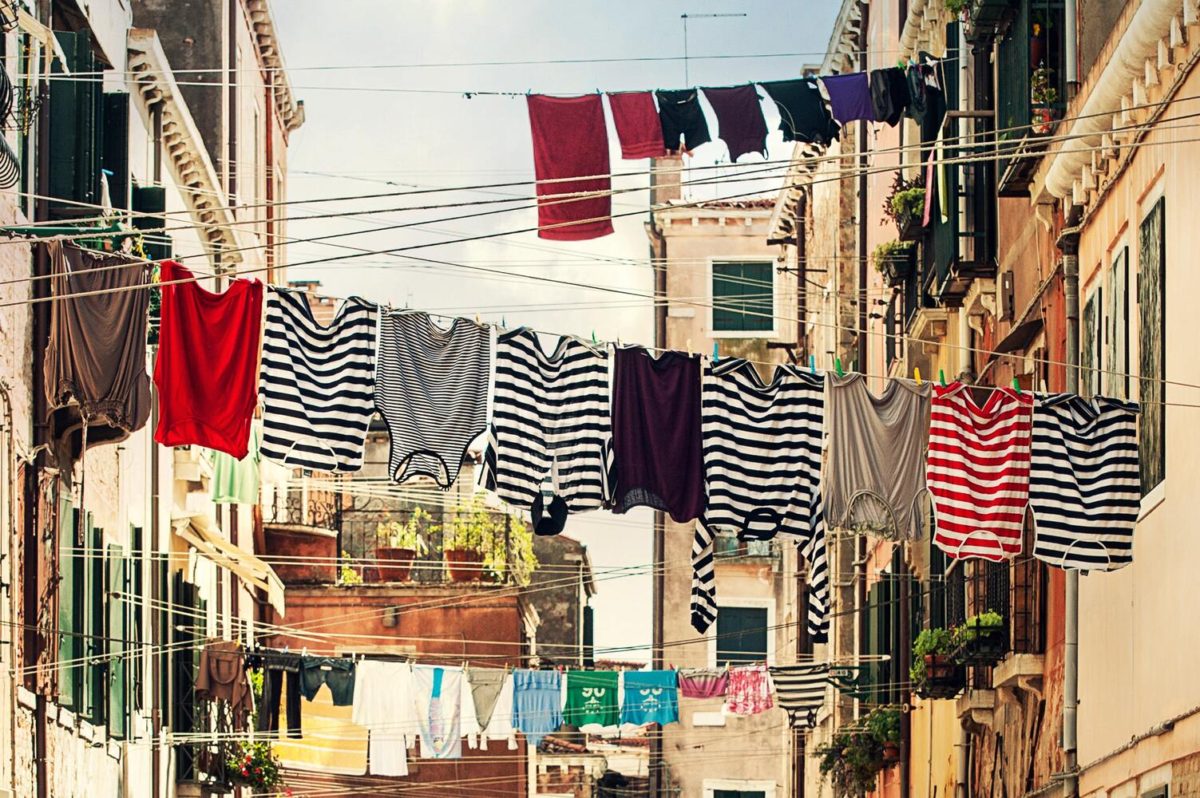Author: Beatrice Murray
As a consumer, it is easy to feel powerless in the face of fashion’s enormous environmental impact. Without being an industry insider, making enough change in your shopping habits to significantly reduce the 2.1 billion (yes, billion) tonnes of greenhouse gases the sector produces every year can seem like an insurmountable challenge.
While the main onus here is on brands, suppliers and production partners to step up and do better, it is also true that the footprint of any garment extends long beyond its last seam being sewn up. In fact, almost a quarter (23%) of any item’s emissions happen once it is already in its new owners’ hands.
The way clothing is cared for can either put extra pressure on the planet or help to relieve it. According to the Fashion on Climate report by McKinsey and Global Fashion Agenda, most of the emissions generated in the usage phase of a product’s life cycle come from washing and drying. This means that small routine changes such as skipping one laundry day in six have the potential to shave 186 million tonnes off the total industry footprint if done at scale. Knowing how to properly care for an item is also key to extending its useful life, meaning that you can love and wear it for longer, delay its destiny as landfill, and in turn take more tonnes off its eventual impact.
So, while you continue to pressure those at the top to do their part, don’t forget that your existing wardrobe holds a powerhouse of potential to make tangible change. Here are our top tips for a more sustainable washing routine that will help protect the planet and your favourite outfits too.
Wash Less & Refresh
Simply washing your clothes less is one of the most effective steps you can take towards a more sustainable laundry routine. This isn’t as much of a sacrifice as it sounds; most of us are actually over-washing our wardrobe staples which can damage the fibres over time. Instead of throwing every item in the wash after a single wear, try spot cleaning for marks and spills, hanging things out to air at the end of the day, or even using a natural clothing refresher spray between laundry cycles.
Learn Your Labels
Before your garment even gets close to the washing basket, you should be reaching for the care label. This is where you will find the maximum temperature at which to wash each item, if it is safe to wash it in a machine at all, and whether or not to risk the tumble dryer. The Love Your Clothes guide to reading care labels is a printable resource that helps you decipher even the most ambiguous of symbols. Make sure to have it to hand, particularly when washing more challenging fibres and colour combinations.
Economise on Energy
A huge 90% of the energy used in a laundry cycle goes into heating the water. You can lower your carbon consumption (and your electricity bills) by keeping the temperature settings on cool. 30°C will be sufficient for most of your wardrobe, leaving your favourite dresses or jumpers less susceptible to damage such as the colours running or the fibres shrinking. And, while it might sound labour-intensive, hand washing is a guaranteed way to give delicate items a bit of extra love. Think pure wool, silk, or cashmere.
Switch to friendlier detergents
Key chemicals used in regular laundry detergents have the potential to cause trouble when they inevitably find their way into our water systems. Take phosphates for example, which are used in commercial cleaning agents such as washing powders to soften the water. These chemical compounds have been found to increase algae production in aquatic areas, in turn depleting oxygen supplies for other marine life. Choose a natural, plant-based and biodegradable product instead, favouring gentle liquids over their more abrasive powdered counterparts which are harsher on the fibres of our clothes.
Minimise Microfibres
Microplastic pollution has been found almost everywhere in our environment: in the Arctic, on uninhabited islands, and perhaps most shockingly, in the bellies of most of the seafood we eat. 35% of these microplastics are thought to come from washing clothes, which release tiny ‘microfibres’ as they spin around the drum. The most effective way to prevent this is by using a washing machine with an in-built microfibre filter, but there is currently no legislation to ensure washing machine manufacturers are legally required to fit these into new models. For now, in-drum solutions such as Guppyfriend have been proven to reduce the amount of fibres released by 54% by reducing shedding during the washing cycle, while laundry balls like Cora Ball catch the fibres and prevent them from reaching the ocean.
Hang It Out to Dry
It might seem simple, but making friends with your washing line is one of the simplest ways to care for both your clothes and the planet. Tumble dryers use between 2kW to 3kW of energy each cycle – more than it takes to wash your clothes in the first place. To cut back on carbon emissions, give your laundry load an extra spin first to get rid of any excess water before hanging your clothes out to air dry. Not only will you save on energy use, but this gentle approach to drying will protect your garments from damage too.
Pick Your Professionals
Last but not least, if an item needs professional care then consider new eco-friendly alternatives to traditional dry cleaning. One such service is offered by Oxwash, and uses a combination of water reclamation systems, ozone technology, microfibre filters and biodegradable detergents to offer a cleaning solution that doesn’t cost the Earth. Oh, and your garments are even collected and re-delivered to you by electric bike, cutting down on transportation emissions too.
Discover other eco-friendly habits for the care of your clothes in our e-book “Sustainable Tips for Your Daily Routine“.
